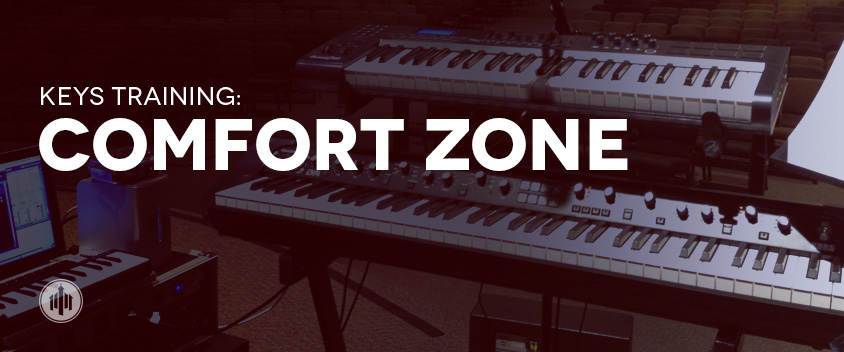
Often the challenge of being a keys player in a team is figuring out what sound to use. Because of this keyboardists can get into a rut of only using the default acoustic piano patch and maybe a solitary synth pad sound. However there are some reasons for this. Most of us were trained as pianists and feel most comfortable in this role. Additionally, the piano suits itself to many styles of music. But what about situations when there is a secondary keyboardist or acoustic piano in the team? How do you pick a complimentary sound without doubling what the other player is doing?
The most important thing to consider when selecting a sound is determining what role the keyboard will fill within the team. The two most immediately relevant features of a sound in this respect are articulation and timbre. Articulation is the shape of your sound. For example does the sound have a fast or slow attack or decay? Will it sustain indefinitely? This additionally determines whether the sound can contribute rhythmical or is it more of a background wash of sound.
Timbre is the color or personality of the sound. Consider the acoustic guitar versus the electric. The acoustic guitar’s timbre is shaped by the body and resonance of the instrument, the property of the strings, and the technique of the player. While one could argue that the electric guitar is essentially the same tool as the acoustic, you can tell the difference when you hear them. This is timbre. The keyboard is more like the electric guitar in the breadth of sounds and timbres it can reproduce and therein lies the challenge. Nowadays you can download the exact sounds as used in a worship recording but this not always an option and having a general strategy will help with comping or creating accompaniment in the moment.
So how do we begin organizing these two ideas? I’ve organized some commonly used keyboard sounds into so called “sonic spectrum”. As you move from left to right the general articulation of the sounds goes from more percussive to softer more background sounds.
Before I mentioned that the acoustic piano is often over used but there is an additional good reason for that. Since it falls in the middle of the spectrum it can adequately perform any role to a certain degree. The original idea behind the development of the piano was to allow for loud or soft articulation. However from a purely physics standpoint timbre is not affected by the loudness of the sound. And since electronic keyboards are not mechanically generating the sound the keyboardist is at the mercy of the quality of the piano program or sample. Therefore it is to the benefit of the keyboardist to explore new sounds with wholly different timbres at times. In the next post we’ll discuss how to begin using this spectrum alongside other members of the team to achieve a complimentary sound.


